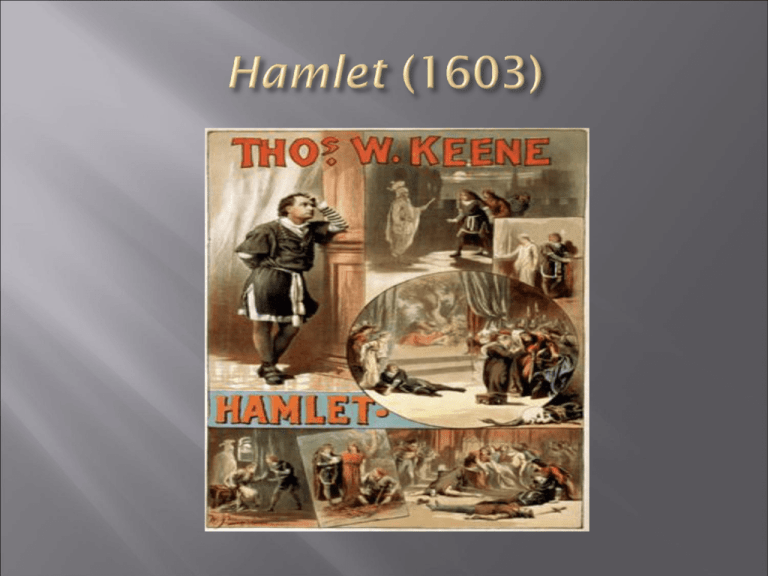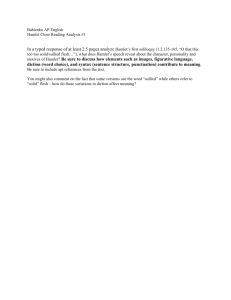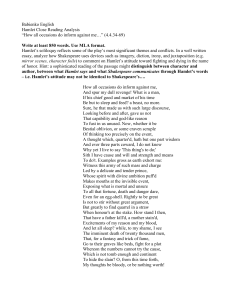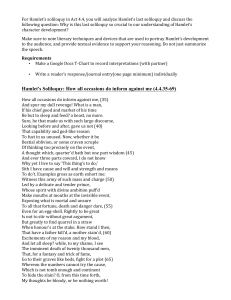About the play
advertisement

A very difficult play to date It was entered in the Stationers’ Register in July 1602, and printed in quarto form in 1603 as The Tragical History of Hamlet, Prince of Denmark It seems very likely that Shakespeare wrote Hamlet in 1600 (the ‘good’ quarto), but had revised it by 1602 to produce the acted version which was printed in the Folio (believed to be compiled by a group of actors) Main source : Norse folk tale (Scandinavian legend)of Amleth, written down in Latin by the Danish historian Saxo Grammaticus and expanded by a French writer, Belleforest in his Histoires tragiques (1559-80), though it is possible that Shakespeare knew the story only at second hand Belleforest’s version was translated into English in 1608 in a version, The Historie of Hamblet, which itself incorporates phrases from Shakespeare’s play Nevertheless in both stories, no ghost has to return to demand vengeance (Shakespeare genius) To have a supernatural character in a Renaissance drama is not a weird thing to do (theological influence) Hamlet is also characterised by an unprecedented range of dramatic techniques and styles, but the most central is the soliloquy This dramatic technique is the most famous opportunities in the world’s theatrical repertoire for an actor to exhibit consciousness in action Most actors look forward to have these soliloquies in order to show case their talents and skill as actors A monologue - an extended speech uttered by one speaker, either to other or as if alone A soliloquy - a dramatic speech uttered by one character speaking aloud while alone on the stage (or while under the impression of being alone) - soliloquist thus reveals inner thought in feelings to the audience 1. Hamlet in Mourning (I.2.129-57) 1. 2. 3. 4. 5. Hamlet Swears to Revenge (I.5.96-115) Hamlet with Hecuba (II.2.534-91) Hamlet Contemplates with Suicide (III.1.64-96) Claudius at Prayer (III.3.39-75) Hamlet Attempts to Kill Claudius (III.3.75-98) No. 4 in the list – “To be or not to be, that is the question” What is the soliloquy about? Reveals the suffering and torture in Hamlet’s mind. It is too painful the endure the torture of fortune and also it feels like there is no way out of the problem. The only to get rid of this intense feeling is to die. Sleeping/dying will solve the suffering of a tortured soul http://www.pathguy.com/hamlet.htm






